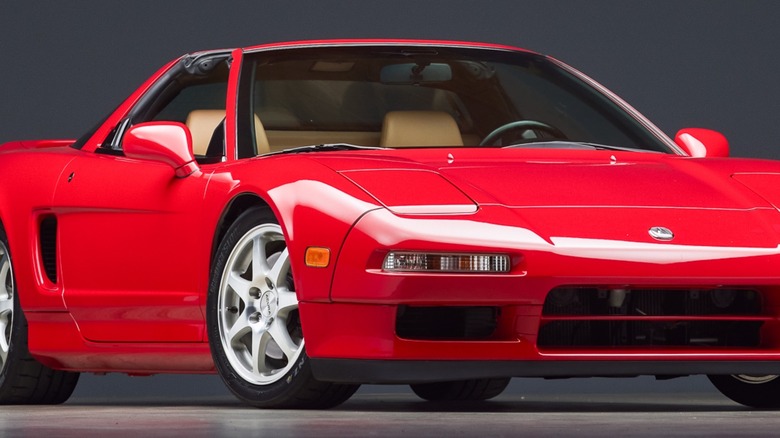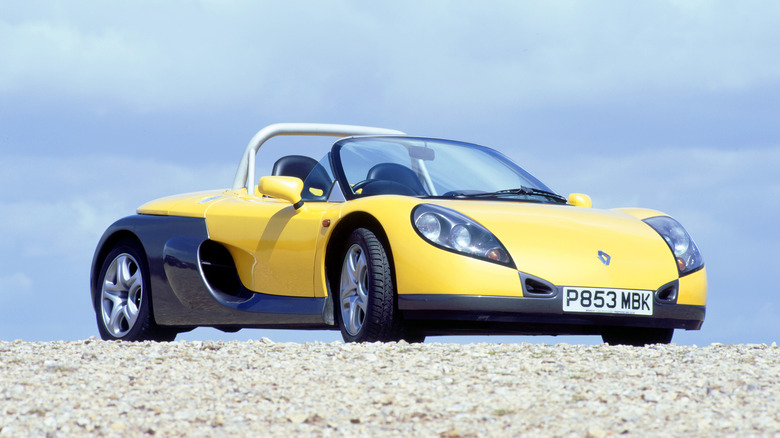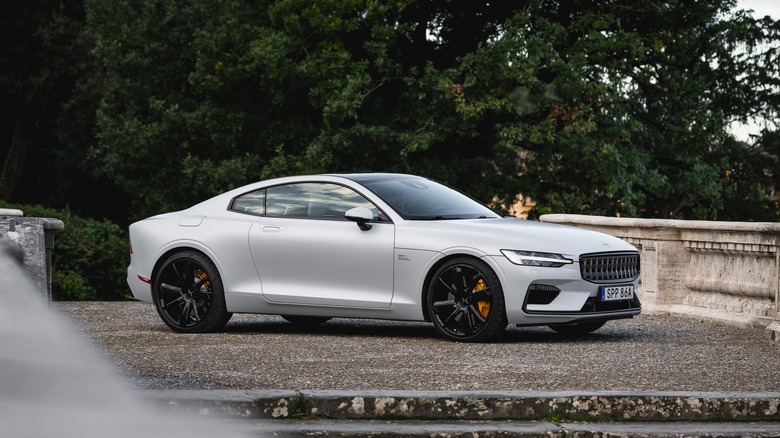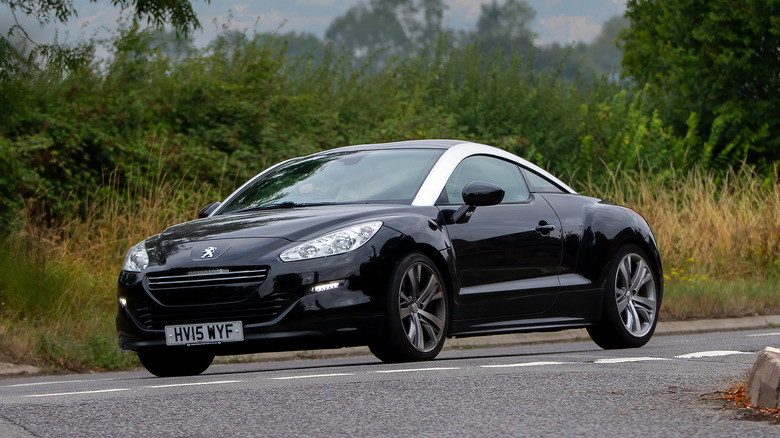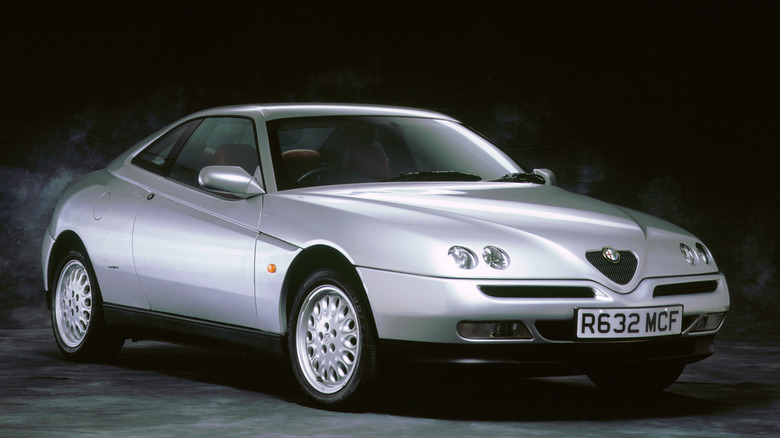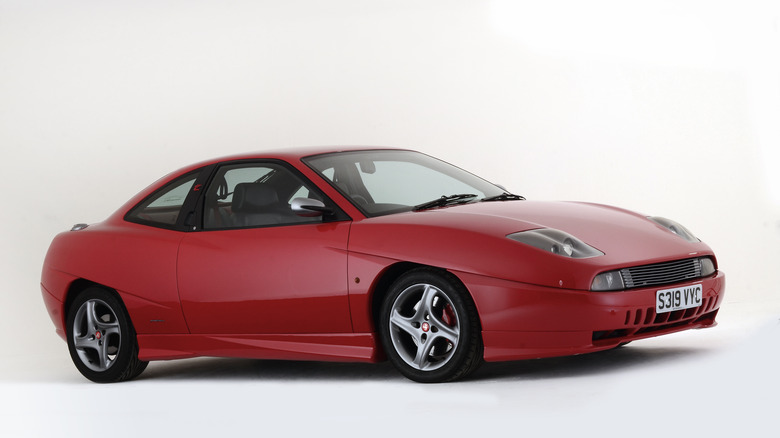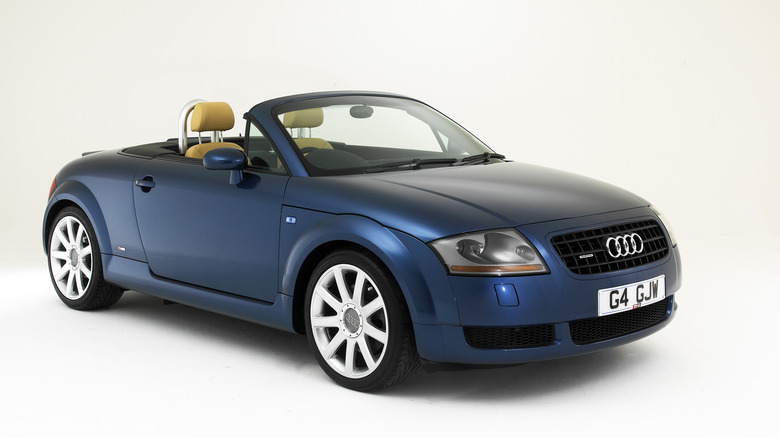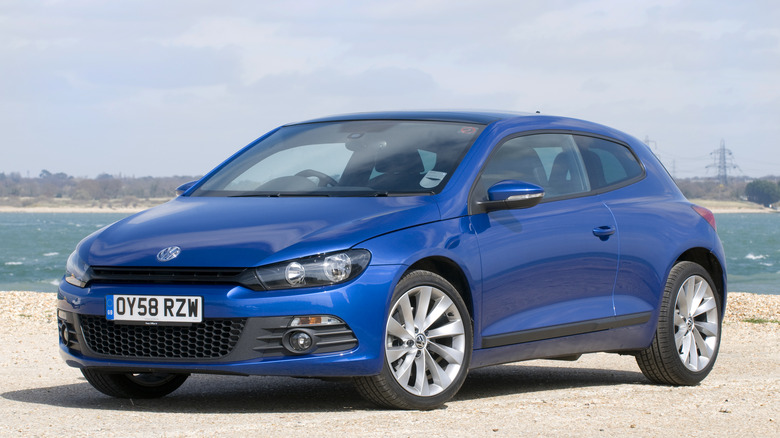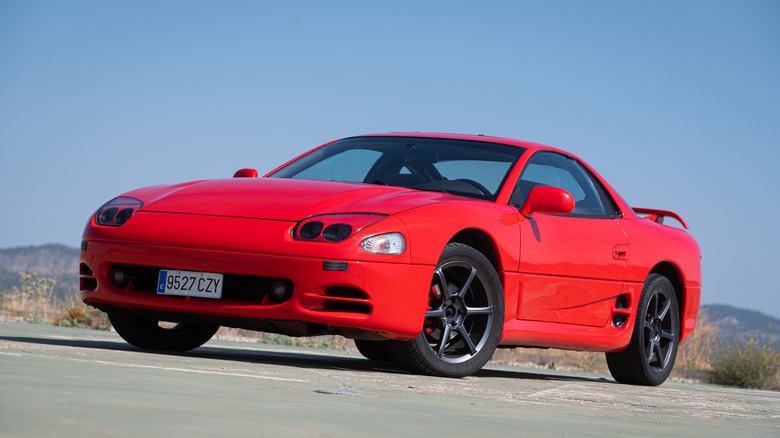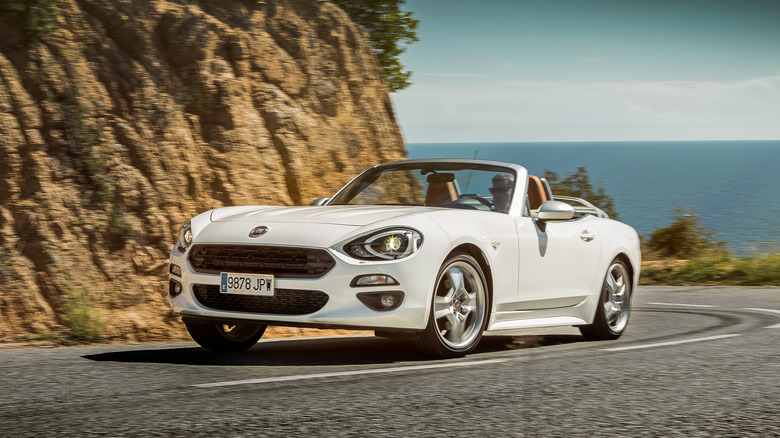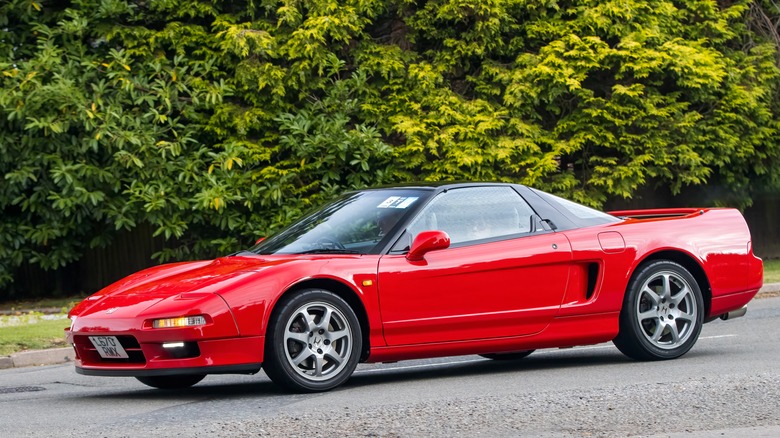10 Amazing Sports Cars You'll Never See From These Brands Again
A car enthusiast loves a good sports car. While not exactly the most lucrative or expansive segment on the market today, there are plenty of ways to have your cake and eat it when it comes to sports cars. Most of them nowadays come from the established manufacturers of such vehicles, stuff like the Porsche Boxster and Cayman, which are sadly being discontinued soon.
Rewind the clock a few years, however, and there were some normal, sometimes even economy car manufacturers that tried their best to make a good sports car. Some of these were better than others, but generally, people tended to opt for the aforementioned established sports cars. It makes sense — why would anyone choose a sports car from Fiat or Volkswagen when they could get something with a Porsche or even Mercedes-Benz badge on it?
These sports cars from unlikely manufacturers, no matter how good they were, didn't really strike a chord with many people. As a result, along with discontinuing them, these automakers don't offer sports cars in their lineup at all anymore.
Renault Sport Spider
It's no secret that Renault's designers and engineers went a little crazy back in the early 2000s. Along with the Avantime – one of the weirdest cars ever made, whose biggest selling point was that it was a two-door blend of a coupe and a minivan — and the Vel Satis, a mutant lovechild between a sedan and a minivan, there was also the wonderfully, unashamedly roofless Renault Sport Spider.
Coming from the same skunkworks team that brought us the ridiculous Renault Sport Clio V6, the Spider was a lightweight, open-top, mid-engined supercar with scissor doors. Remember, this is the same company that gave us the Twingo and the Twizy.
Under the engine cover in the back sat an F7R 2.0-liter naturally-aspirated four-cylinder engine, similar to what you'd find in a more normal Renault Sport-badged vehicle. Power output was 148 hp, which may not sound like much, but the Sport Spider weighed a mere 2,050 pounds.
From the outset, the main focus of the Renault Sport Spider was to be a race car and participate in various one-make racing championships, where it proved quite successful. Only around 1,800 units of the Sport Spider were ever built, making it rarer than a first-generation Ford GT.
Polestar 1
A few years ago, in a bid to expand its brand portfolio, Volvo spun off its tuning arm Polestar into a separate brand with a focus on electric cars and swaying people away from a Tesla. Confusingly, the brand's first car... was not electric. It was a plug-in hybrid, and what a plug-in hybrid it was.
The Polestar 1 is easily one of the best-looking modern cars to come out of anything related to Volvo. It's essentially a production version of the incredible Volvo Concept Coupe revealed over a decade ago. The proportions are just right, and the signature Volvo/Polestar styling traits work exceedingly well on a low-profile, front-engined coupe like the Polestar 1.
Luckily, the 1 also had the performance to back it up. Under the hood is a 2.0-liter twincharged four-cylinder, meaning it has both a turbocharger and a supercharger. Because, you know, only one type of forced induction is so pedestrian. A pair of electric motors handled power delivery to the rear wheels, making the Polestar 1 AWD. Combined system output with everything at full chat is an almost incomprehensible 691 hp. For context, that output matches the original Lamborghini Aventador.
Lovely as the Polestar 1 may be, it was limited to only 1,500 units worldwide. It was merely a way for Polestar to kickstart its adventure and drum up interest — it was never intended to be a mainstay of the lineup. It was also very pricey, starting at around $150,000.
Peugeot RCZ
Revealed alongside the original 308 back in the late 2000s, the Peugeot 308 RCZ concept car was something nobody could have expected. As Top Gear frequently reminded us, the 2000s were a dark era for Peugeot, so a two-door sports car with a double-bubble roof and huge flared fenders was definitely a treat for the senses.
Two years later, after greenlighting this swanky coupe for production, the RCZ hit the market (without the 308 badge) at the turn of the previous decade. If the styling didn't give any clues, the RCZ was a direct competitor to the Audi TT.
Like the TT, the RCZ was FWD and based on a more humble compact car platform – in this case, that of the Peugeot 308. There was a good variety of engines to choose from, including a turbodiesel four-cylinder, but that's not the one you want. Initially, Peugeot offered a 200 hp 1.6-liter gas four-cylinder with a turbo, resulting in a genuinely fun and sprightly car. Later on, after the facelift RCZ came out, there was the 270 hp RCZ R.
It won't surprise you to hear that the small FWD sports car market shrank significantly by the 2010s, leading Peugeot to pull the plug on the RCZ in 2015. There hasn't been a single replacement or even a spiritual successor since then. Peugeot doesn't offer sports cars in its current lineup at all, and that's really disappointing.
Alfa Romeo GTV (916)
Throughout the '70s and '80s, Gran Turismo Veloce was the badge applied to the sportier two-door version of Alfa Romeo's mid-size sedan, the Alfetta. It was RWD and offered with Alfa enthusiasts' darling – the rather special Busso V6 engine. When Jeremy Clarkson loves it so much that he still owns one, you know it's gotta be good.
Although the GTV was discontinued from Alfa's lineup in 1987, the nameplate would return a few years later for a car simply called the GTV. Despite being an Alfa Romeo, it was underpinned by Fiat's perfectly ordinary Type Two platform. However, after some heavy modifications and changes, both Alfa's engineers and designers were able to make great use of it.
The 916 GTV's styling is undeniably unique. While it wasn't everyone's favorite look, it was supremely distinctive, thanks to its low-mounted rear lightbar, angular creases, and small round headlights up front.
Power came from a variety of Twin Spark four-cylinder engines, as well as, of course, the Busso V6. Disappointingly, the GTV was FWD, unlike its predecessor. Despite being a pretty solid car, it didn't win that many favors with Alfa enthusiasts — or any manner of enthusiasts, for that matter. Despite numerous (broken) promises, Alfa still refuses to bring a sports car like the GTV to market.
Fiat Coupe
That modified version of the Type Two platform was also used by Fiat for its own FWD sports car, simply called the Coupe. This is one of many FWD sports cars that prove the drivetrain layout is not for the feeble. With its sharper, more angular bodywork and slashed wheel arches, many enthusiasts have taken the liberty of calling the Fiat Coupe a mini Ferrari.
The Coupe's interior is also a joy to look at, featuring a painted dashboard panel and some lovely analog gauges – proof that the Italians really care about little details like that. Then again, with an interior styled by Pininfarina and an exterior designed by Chris Bangle, is it really a surprise that the interior is such a nice place to be?
Like the Alfa, the Fiat Coupe was also offered with a lineup of four-cylinder engines, but those aren't the ones you want. Taking the spot of the Busso as the would-be flagship powertrain, the Coupe offered something a little different: a 2.0-liter turbocharged 20V five-cylinder engine, producing a healthy 220 hp in its most powerful version.
This engine is also fairly bulletproof, meaning it's highly tunable and capable of going the distance with proper maintenance. Disappointingly, after the 124 Spider was discontinued, Fiat now won't sell you a sports car of any kind.
Audi TT
Another sports car soldier that fell victim to the rise of the SUV and the waning interest in sporty two-door cars. The original Audi TT concept car drummed up so much interest and amazement that Audi decided to put it into production. The original Mk1 TT was launched in 1998, and even though it was based on the Golf, its design was unlike anything anyone had seen before — not just from Audi, but in general.
The showstopping curvy design was so good it still looks timeless today, which is probably why Audi didn't change it much across the TT's 25-year production run. A huge variety of powertrains were offered, including various turbocharged four-cylinders, a VR6, a five-cylinder, and even a diesel on some European models.
It was either FWD or AWD, offering versatility in drivetrain configurations. The TT was a fantastic car to drive, and it's not at all surprising that it has already started its transcendence into a classic car. Sadly, Audi discontinued the TT after the 2023 model year, and there are no plans to bring it back in its original form. With the discontinuation of the R8 after 2024, Audi's entire sports car lineup will be retired completely.
Volkswagen Scirocco
The Mk1 Golf was a suitable replacement for the pioneering Beetle. It was so suitable, in fact, that over the past five decades, VW has produced well over 30 million examples. Back in the '70s, VW introduced a sportier two-door coupe based on the same platform: the Scirocco.
Despite its sportier appearance, it had a lot in common with the Golf, and the same applied to the second-generation Scirocco of Midnight Club: Los Angeles fame. The Corrado, sadly, was unable to ignite quite the same spark as the Scirocco throughout the '90s, but in 2008, Volkswagen decided to give the Scirocco one last shot.
Intended as a competitor to the likes of the Mazda RX-8 and Volvo C30, the third and final generation Scirocco was once again based on the Golf. However, it featured a completely bespoke body and much more distinctive styling. A pretty good lineup of powertrains was offered, including a 276 hp four-cylinder in the Scirocco R. You can even swap a VR6 into it if you so choose.
Sadly, as the 2010s rolled in, the market for affordable sporty cars like the Scirocco shrank to basically nothing, and VW pulled the plug on the Scirocco for the final time in 2017. Today, VW is (perhaps way too) focused on crossovers and electric cars. Sure, the Golf GTI and R still exist, but a two-door sports car with a VW badge is now a thing of the past.
Mitsubishi GTO / 3000GT
The early '90s were a great time for lovers of Japanese sports cars, as nearly all the major Japanese manufacturers had flagship sports cars to offer. Honda had the NSX, Mazda the RX-7, and one of the most compelling competitors in this class, the Mitsubishi GTO.
Known as the Mitsubishi 3000GT in North America, along with a badge-engineered version called the Dodge Stealth, the GTO was quite the sports car. To this day, it remains one of the most striking sports car designs to come out of Japan and is definitely a stylistic icon of the 1990s. From its rounded overall design that broke away from the boxy trend of the '80s to its low profile, the GTO means serious business.
Under the hood was a 3.0-liter V6, available in naturally aspirated or twin-turbocharged configurations. By the end of its run, the 3000GT VR-4 delivered 300 hp, sending power to all four wheels through a six-speed manual transmission, while earlier VR-4 models had a five-speed manual. The GTO was also very notable for incorporating advanced features that even modern performance cars aspire to, like four-wheel steering and active aerodynamics. Yes, really — active aero.
Unfortunately, as Mitsubishi focuses on rebadged Renaults and the overstayed Mirage, sports cars like this GTO are no longer part of Mitsubishi's lineup.
Fiat 124 Spider
It's almost hard to believe, but the current Mazda Miata has been with us for almost a decade now. Before the ND Miata came out, Fiat announced a partnership with Mazda, which would lead to the Miata having a sister car. A couple of years after the ND Miata hit the market, Fiat came out with its own version: the 124 Spider.
Bringing back an iconic name from the automaker's past, the 124 Spider is a fantastic example of restrained retro styling. It featured a few minor references to the original, but nothing too Thunderbird or PT Cruiser-esque. The 124 was intended as more of a cruiser, whereas the Abarth 124 Spider was the more hunkered-down sports car with a rorty exhaust and a whole 170 hp — a significant distinction from its Japanese sibling.
Both cars were built in Japan and shared about 90% of their interiors, with only a few minor differences. Unfortunately, the 124 Spider didn't win over as many buyers as Fiat hoped, leading to its discontinuation in 2020, just a few years after its introduction. Sure, Fiat and Abarth still offer some sporty cars, but you can no longer buy a proper RWD sports car like the 124 Spider from Fiat anymore.
Acura NSX
Called the Honda NSX elsewhere in the world, this car set out to prove something no other supercar had attempted before. It was a direct competitor to Ferrari's best at the time and proof that a supercar could also be daily usable. Despite its supercar looks, mid-engine layout, and pop-up headlights, it was still a Honda with a Honda powertrain and a Honda interior. This meant it wasn't a nuisance to live with on a day-to-day basis and would be more reliable than a comparable Italian option in the long run.
The 3.0-liter and 3.2-liter VTEC V6 engines under the rear glass were powerhouses, revving all the way to 8,000 RPM on most models. After a 15-year production run, the original NSX ended production in 2005. Honda spent the following years teasing a successor, and finally, in 2016, the NSX came back with hybrid power, a renewed penchant for hunting European supercars, and upholding the original's reputation.
Despite Honda's engineers putting in the work, nobody really understood the NSX or took it seriously, so it was never really that big of a success regardless of its generation. After the Type S bowed out in 2022, the NSX was officially retired. As of now, Honda doesn't sell a sports car. Well, until the Prelude comes along.
